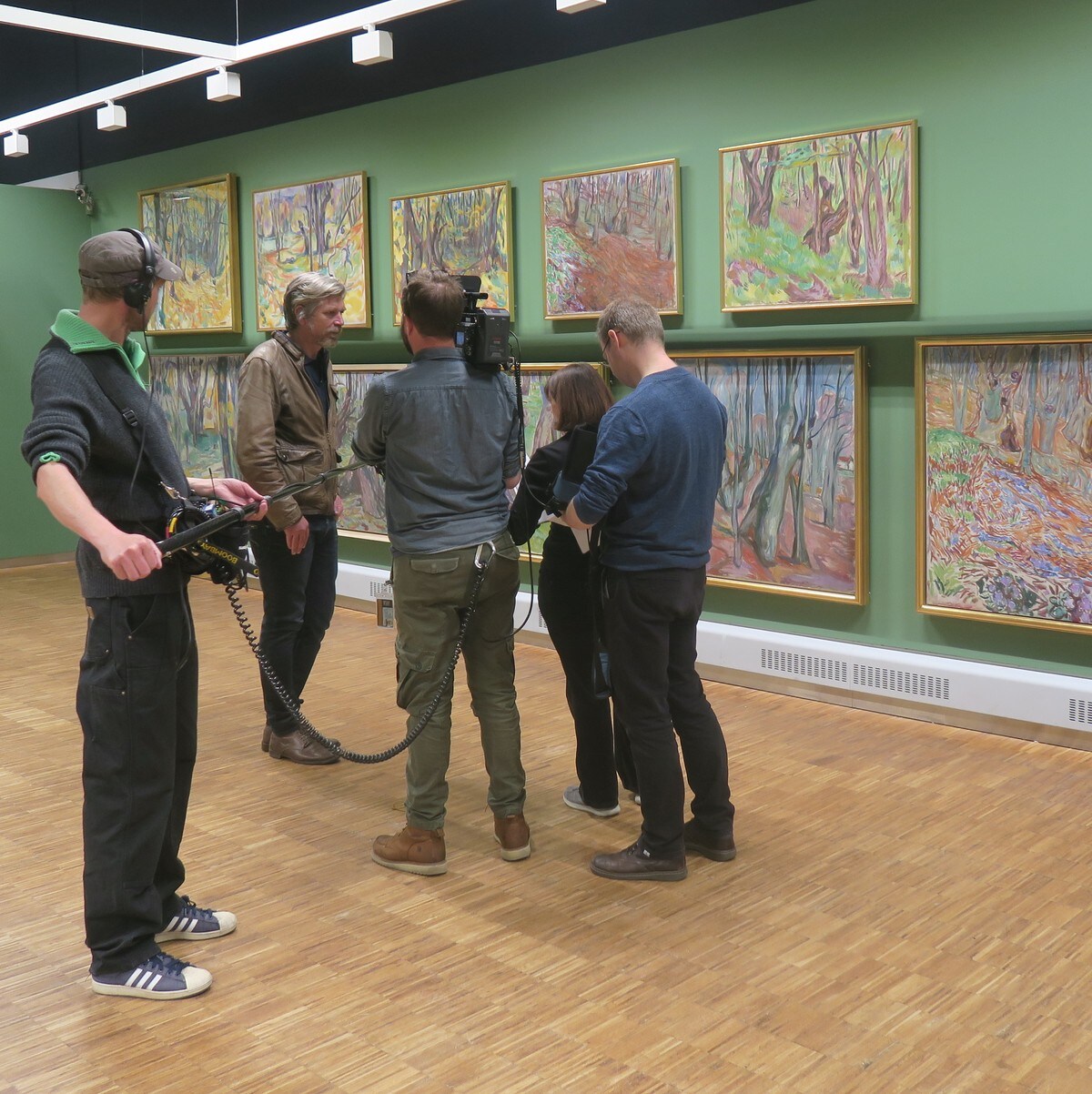

His despair is magnificently visual, showing itself in hundreds of works of unforgettable graphic force. He is still heroically upright, but listening to time as it ticks away towards to death. In the late – and arguably greatest – of his self-portraits, Munch depicts himself as an elderly and infirm depressive standing between a grandfather clock and the coffin of his narrow bed. And he has no fear of appearing ludicrous or hyperbolic in the many dozens of self-portraits, where Munch shows himself as the spurned lover, the lone drinker, the victim of Spanish flu or the murdered corpse. Many of his symbolic figures – the screamer, for instance – are reprised in every medium. He is equally powerful in drawing, painting, etching and woodcut, as will be seen at the forthcoming show of his prints at the British Museum. He paints universal suffering every time: and who could fail to recognise the emotions in his art? His passions are open and so is his art, with its swirling amoebic forms and its high-coloured melodrama. Completely shameless when it comes to hypochondria, jealousy or rancour, he is never too proud to show himself eaten up by self-pity or lust. Munch is the miserabilist par excellence, and generous to a fault. You ruined my life: that is the subtext of a fantastically theatrical self-portrait in which the artist lies in a spreading pool of his own blood, after his lover has shot him to death. In a suffocating relationship? Look at his painting of a man literally gasping for breath in a woman’s embrace. We all know what it means to say that our lives are hell, but Munch actually paints himself that way: up to his loins in infernal flames. Photograph: Alamy Stock PhotoĪnd this is his unique and brilliant modus operandi – exaggeration in the service of truth.

Self-Portrait With the Spanish Flu, 1919. Those fantastical scenes in which lovers seem to be sucking one another’s blood, locked in a fatal embrace or kissing each other to death. The naked girl on the bed in Puberty, trying to shield her modesty against prying eyes while her shadow rears up on the wall like a monster behind her. The femme-fatale, with her long hair flailing around her in psychedelic tendrils. His genius lies partly in coining such extraordinary icons of misery and menace. A nomad in his youth, he never married and eventually settled in the village of Ekely outside Oslo, where he died at the age of 80 in 1944, always fearful that his paintings might be seized during the Nazi occupation of Norway. Asthmatic, bronchitic, alcoholic, he suffered two nervous breakdowns and many broken relationships. Born in Norway in 1863, Munch was motherless by the age of five and tyrannised by a hellfire zealot of a father who forced him out of bed at midnight to watch the death of his young sister. This is his unique and brilliant modus operandi – exaggeration in the service of truth


 0 kommentar(er)
0 kommentar(er)
